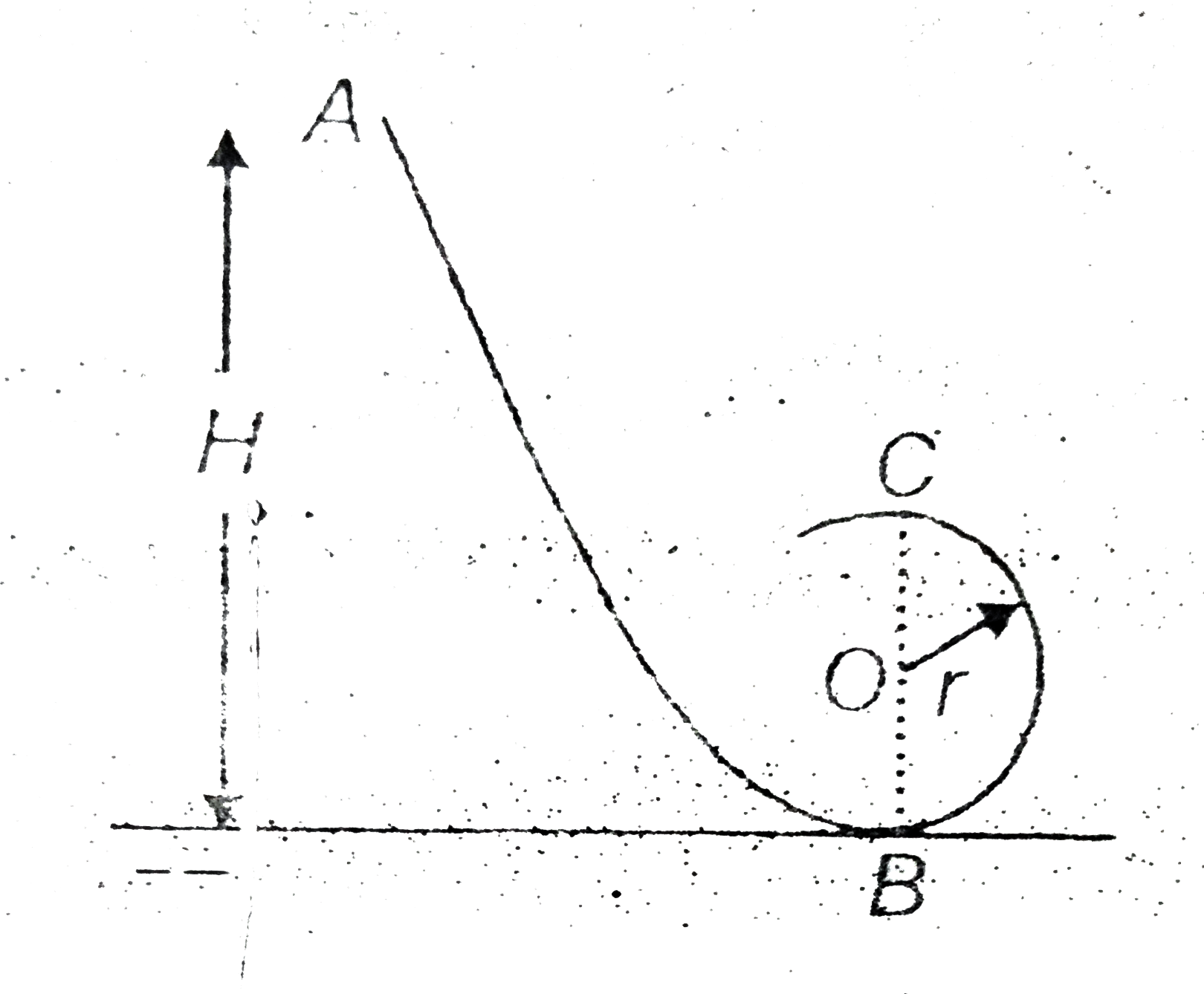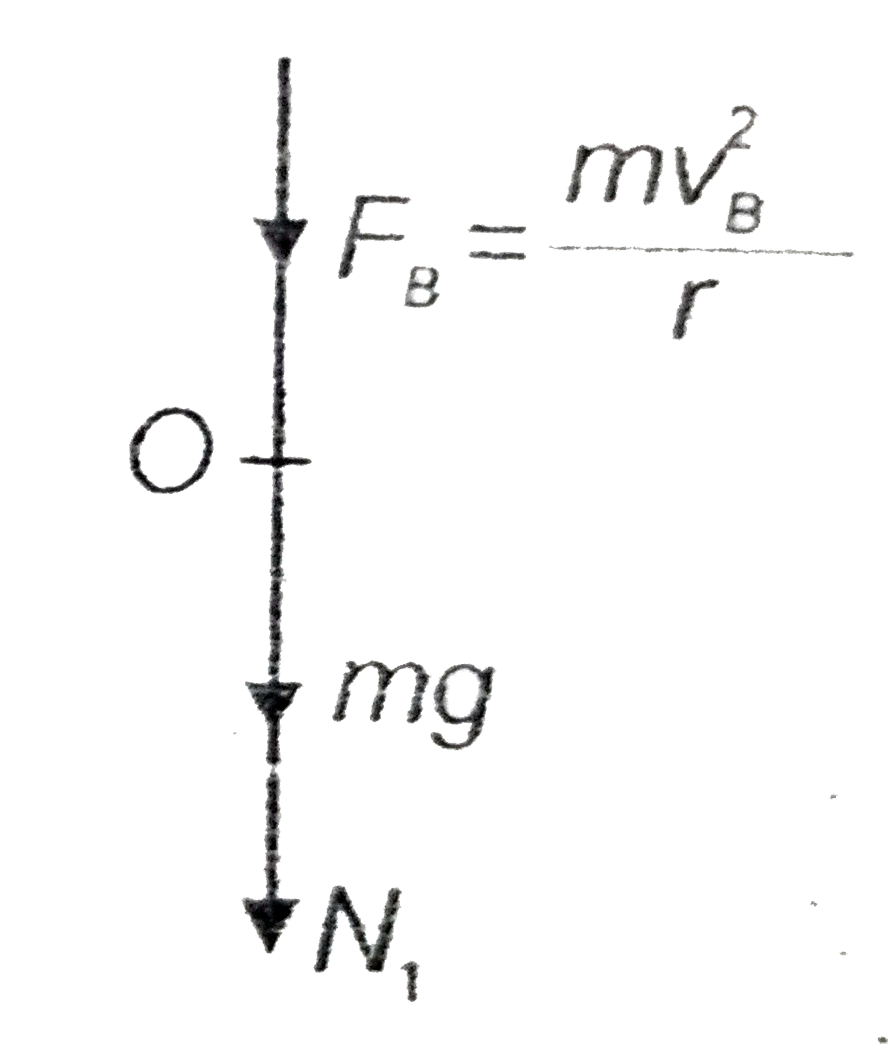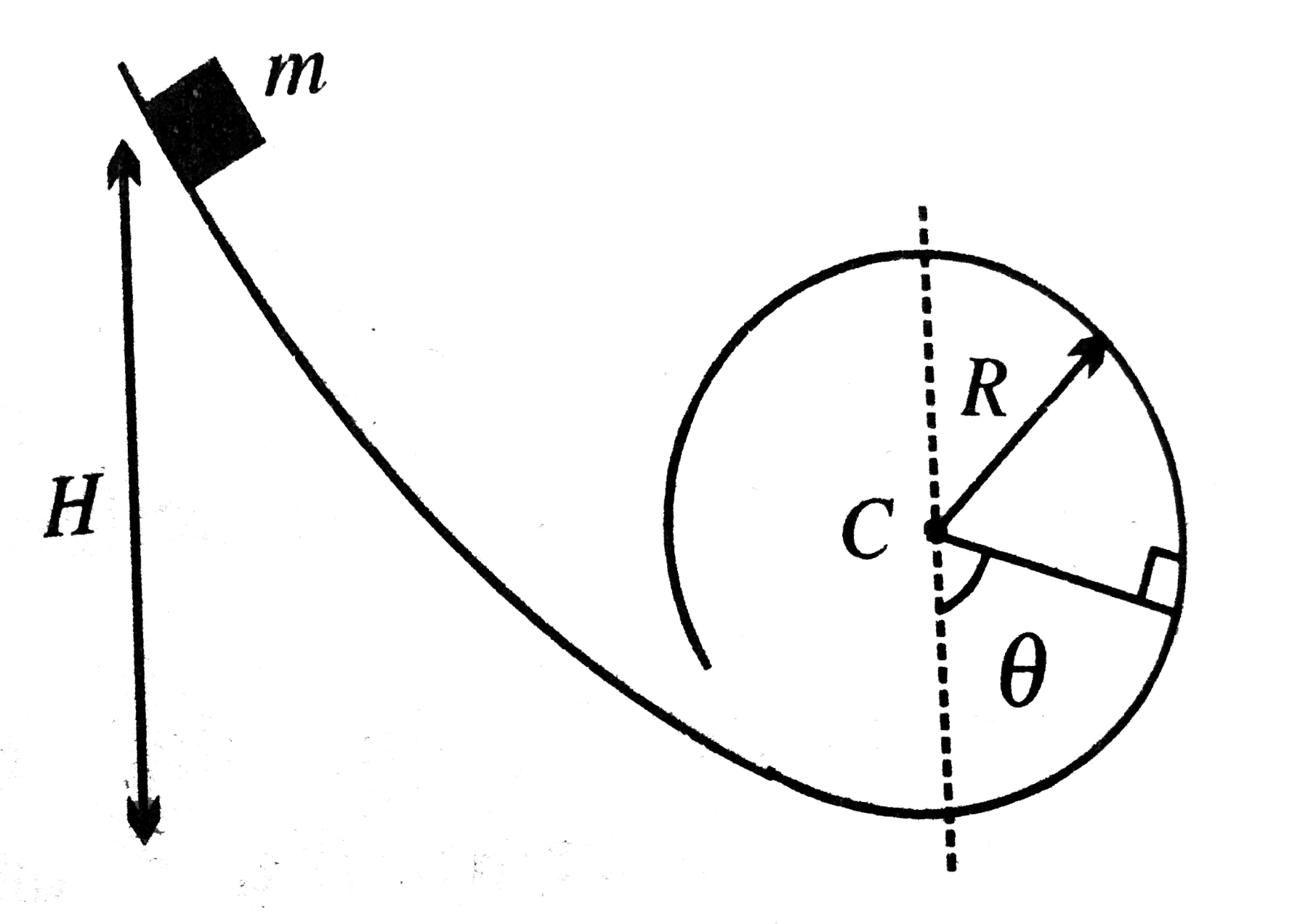A particle of mass m is released from point A as shown in the gigure. Would it loop the loop if H=4r? What is the force on the circular track when it is at point (a) B, (b) C?

Let speed at the lowest point B ve vB
Total energy A= Total energy at B
0+mgH=12mv2B
vB=√2gH=√8gr
Let N1 be the force exerted by the track at B.
N1=mg+mv2BR
If vc is velocity at C.
v2C=v2B−4gr
N2 is force exerted by the track at C
N2=mv2cr−mg
Let speed at lowest point B be vB.
Total energy at A= Total energy at B
0+mgH=12mv2B+0
vB=√2gh=√2g×4r=√8gr>vmin(=√5gr)
So, the particle can loop the loop
Let N1 be the force exerted by the track at B.

According to III law,
N1=mg+mv2Br
=mg+m×8grr=9mg

Force exerted by the particle on the track =9 mgh directed vertically downward At C,
Let the speed be vC
v2C=v2B−4gr
=8gr−4gr=4gr
Let N2 be the force exerted by the track at C
N2=mv2Cr−mg
=4mg−mg
=3mg
Force exerted by the particle on the track at C is 3 mg directed redially outward.

Topper's Solved these Questions
- WORK, ENERGY AND POWERBOOK - AAKASH INSTITUTE ENGLISHCHAPTER - WORK, ENERGY AND POWEREXERCISE - SECTION-A (OBJECTIVE TYPE QUESTIONS (ONE OPTIONISCORRECT)
60 Videos
- WORK, ENERGY AND POWERBOOK - AAKASH INSTITUTE ENGLISHCHAPTER - WORK, ENERGY AND POWEREXERCISE - SECTION-B (SUBJECTIVE TYPE QUESTIONS) (ONE OPTIONS IS CORRECT)
45 Videos
- WORK, ENERGY AND POWERBOOK - AAKASH INSTITUTE ENGLISHCHAPTER - WORK, ENERGY AND POWEREXERCISE - IILUSTRATION
2 Videos
- WAVESBOOK - AAKASH INSTITUTE ENGLISHCHAPTER - WAVESEXERCISE - ASSIGNMENT ( SECTION-D ( Assertion - Reason Type Questions ))
12 Videos
Similar Questions
A particle of mass m=5.00kg is released from point A and it slides on the frictionless track shown in figure. Determine (a) the particle's speed at points B and C and (b) the net work done by the gravitational force as the particle moves from A to C.

View SolutionA ball of mass m is released from A inside a smooth wedge of mass m as shown in figure. What is the speed of the wedge when the ball reaches point B?

View SolutionFigure shows a circular frications trck of radius R, centred at point O. A particle of mass M is released from point A(OA=R/2). After collision with the track, the particle moves along on the track. Then the coefficient of restitution e is.

View SolutionA particle of mass m is released from a height H on a smooth curved surface which ends into a vertical loop of radius R, as shown. Choose the correct alernative(s) if H=2R.

View SolutionA particle of mass m is released from a height H on a smooth curved surface which ends into a vertical loop of radius R, as shown. Choose the correct alernative(s) if H=2R.

View SolutionA particle of mass 1g and charge 2 C is released from a point A in a region of space containing electric field. Its speed is measured to be 2 m/s when it passes a point B some distance away from A. Potential difference the two points A and B is
View SolutionAn object of mass m is released from rest at a height h above the surface of a table. The object slides along the inside of the loop. The loop track consisting of a ramp and a circular loop of radius R shown in the figure. Assume that the track is frictionless. When the object is at the top of the circular track it pushes against the track with a force equal to three times its weight. What height was the object dropped from?

View SolutionA particle of mass m and positive charge q is released from point A. Its speed is found to be v when it passes through a point B. which of the two points is at higher potential ? What is the potential difference between the points?
View SolutionA particle of mass m slides on a frictionaless surface ABCD, starting from rest as shown in figure. The part BCD is a circular arc. If it looses contact at point P, the maximum height attained by the particle from point C is

View SolutionA particle of mass 20g is released with an initial velocity 5m/s along the curve from the point A, as shown in the figure. The point A is at height h from point B. The particle slides along the frictionless surface. When the particle reaches point B, its angular momentum about O will be : (Take g=10m/s2).

View Solution
